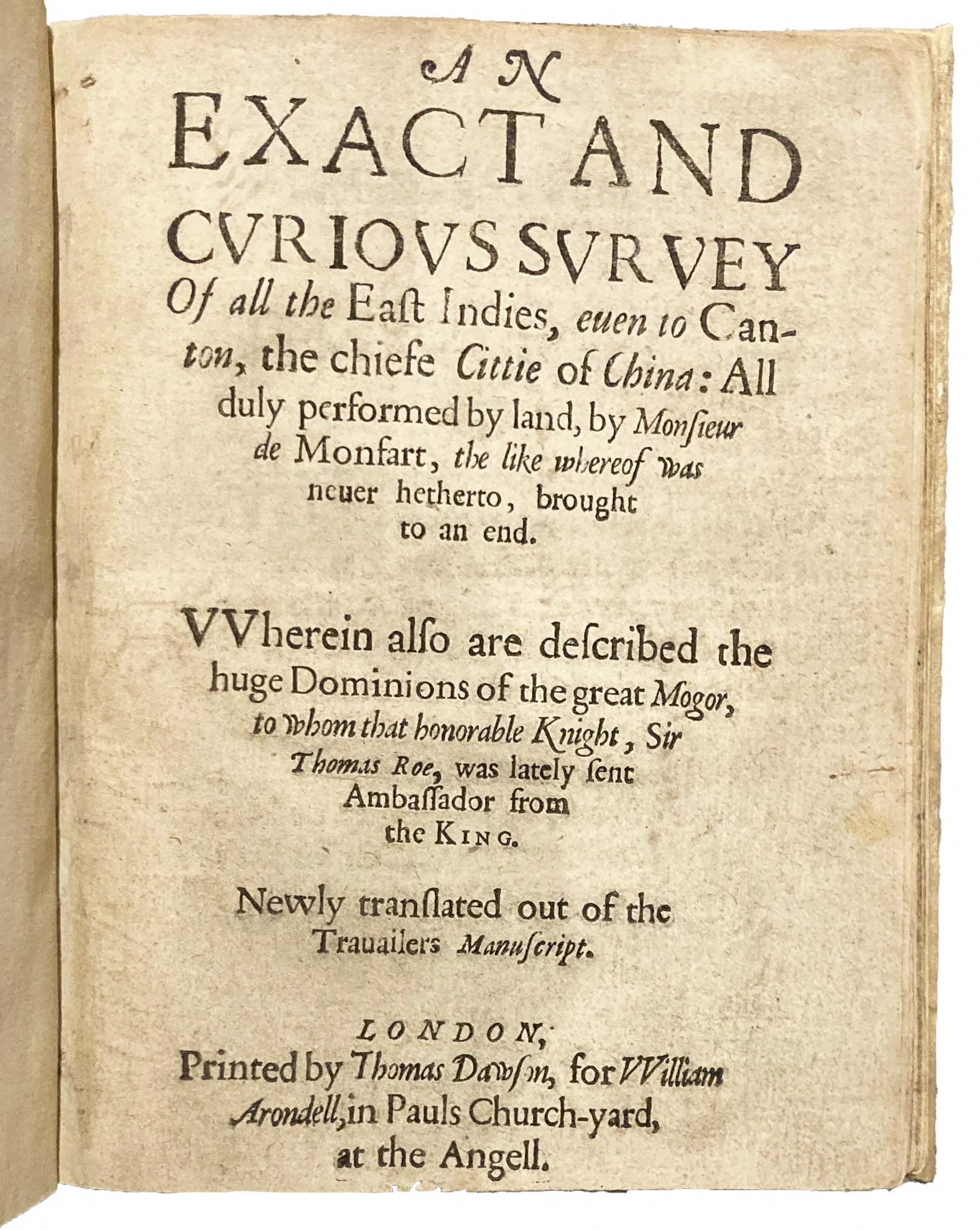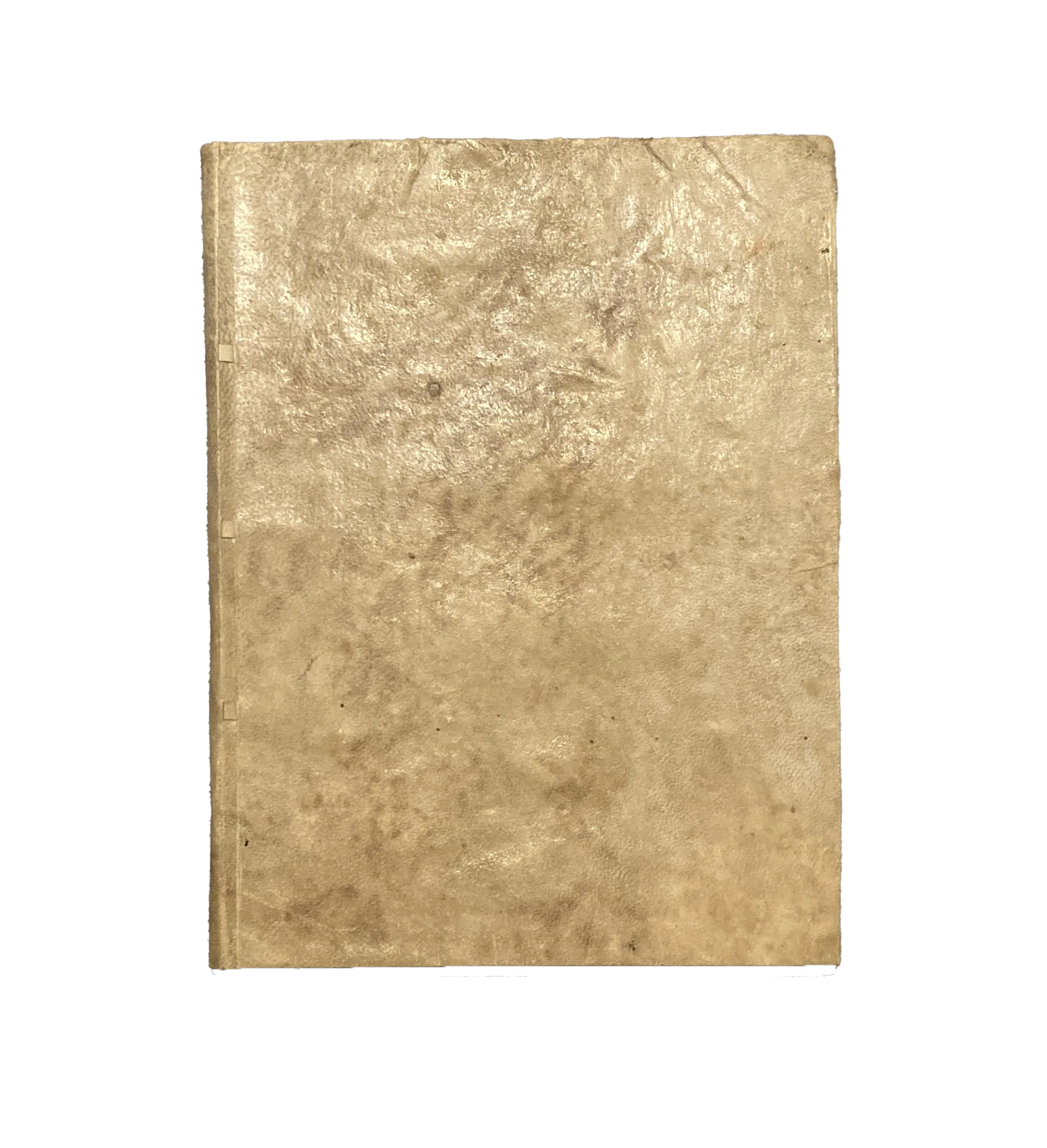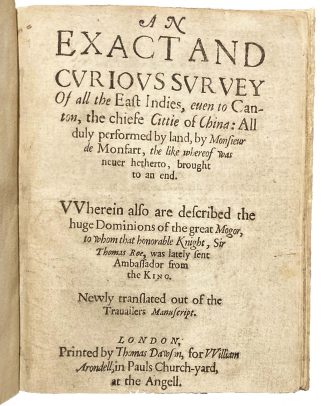FEYNES, Henri de; TOURVAL, Jean Loiseau de
An exact and curious survey of all the East Indies, even to Canton […]
London, Thomas Dawson for William Arondell, 1615£35,000.00
FIRST EDITION. Small 4to. pp. [10] 40 [2], final blank. Roman letter, little italic. Historiated woodcut initials and ornaments. Age yellowed, t-p lightly dusty, occasional marginal stain. Trimmed, with loss of much of imprint date, missing running title on some upper margins, lesser shaving to marginal notes, and signatures. Contemporary mss. ‘est liber meus’ to final leaf of text and ‘Willi Aerton’ to recto blank. A good copy in contemporary vellum.
First edition of a pioneering first-hand account of explorer Henri de Feynes’ voyage to the East Indies and China, the first Frenchman to visit them. It was translated by Jean Loiseau de Tourval, a Frenchman renowned at the time within English literary circles for his extensive translations, who came to London in 1603 and spied for King James I. In fact, this edition precedes the French original, which was not published until 1630. Until the late 16th century, travel to these parts of the world had been limited to a handful of European explorers such as Marco Polo (1254-1324) and Niccolo de’ Conti (c.1395-1469) and missionary priests. De Feynes’ journey marks the beginning of greater Western interest in the far East, as merchants increasingly followed in his footsteps. Setting out from Paris in 1608, possibly at the behest of King Henry IV, de Feynes spent three months travelling by land through the Middle East, joining the Baghdad caravan at Aleppo on the way to Isfahan, before advancing through Hormuz and onto India. He continues onto Goa and travels across India, touring Sri Lanka and the islands of Southern Asia, before settling briefly in Canton, modern Guangzhou, in early 1609. The city was the only place foreign merchants and travellers were allowed to stay, and it remains one of the world’s busiest mercantile hubs. He returned via ship, by way of Mozambique, to Lisbon.
On his travels, the author comments extensively on the size and beauty of each city, comparing their magnitude to cities in France, as well as local customs, religion, and exotic foods such as melon and pineapple. He makes one of the earliest references to coffee, which he calls ‘caahiette’. Particular admiration is expressed for the Mogul palace, likely belonging to Jahangir (1569-1627), the fourth Mogul emperor. He also notes the extensive Dutch and Portuguese presence in many of the East Indian islands. Arriving in China, he describes the thriving silk industry and how silk is made, in addition to the traditional practice of female foot-binding and cormorant fishing, a technique whereby a loose snare is fastened to the bird, preventing him from swallowing larger fish, allowing fishermen to access to those that are regurgitated.
A rare account of early travel and exploration in the Far East.
ESTC: S102015; Cox: p.266; Lowndes: IV 1583; Cordier: 872; not in Blackmer.In stock





